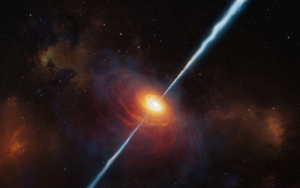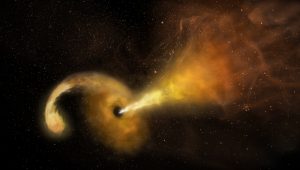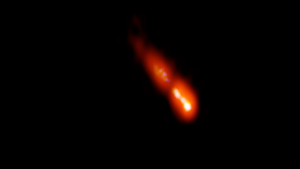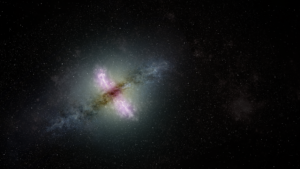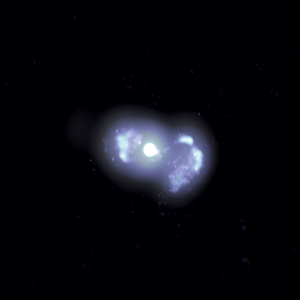Astronomers using the VLA and VLBA have found the most distant cosmic jet yet discovered, material propelled at nearly the speed of light by a supermassive black hole in the core of a galaxy some 13 billion light-years from Earth.
VLA Helps Astronomers Make New Discoveries About Star-Shredding Events
New studies using the VLA and other telescopes have added to our knowledge of what happens when a black hole shreds a star, but also have raised new questions that astronomers must tackle.
Quasar Discovery Sets New Distance Record
Astronomers using the Atacama Large Millimeter/submillimeter Array (ALMA), along with other telescopes, have discovered the most distant quasar yet found. The bright quasar, powered by a supermassive black hole at the core of a galaxy, is seen as it was only 670 million years after the Big Bang, and is providing valuable clues about how such huge black holes and their host galaxies formed in the early Universe.
IMAGE RELEASE: A Blazar In the Early Universe
Observations with the continent-wide Very Long Baseline Array (VLBA) reveal previously unseen details in a jet of material ejected from the core of a galaxy seen as it was when the universe was only about 7 percent of its current age.
VLA Sky Survey Reveals Newborn Jets in Distant Galaxies
Comparing data from VLA sky surveys made some two decades apart revealed that the black hole-powered “engines” at the cores of some distant galaxies have launched new, superfast jets of material during the interval between the surveys.
IMAGE RELEASE: A Galaxy’s Stop-and-Start Young Radio Jets
VLBA image shows details of a young jet emitted from the core of an active galaxy, revealing that the jet activity stopped, then restarted only a decade ago.






